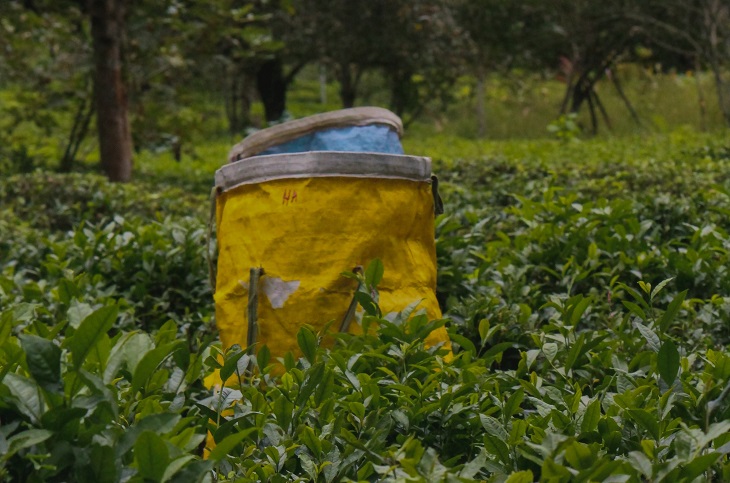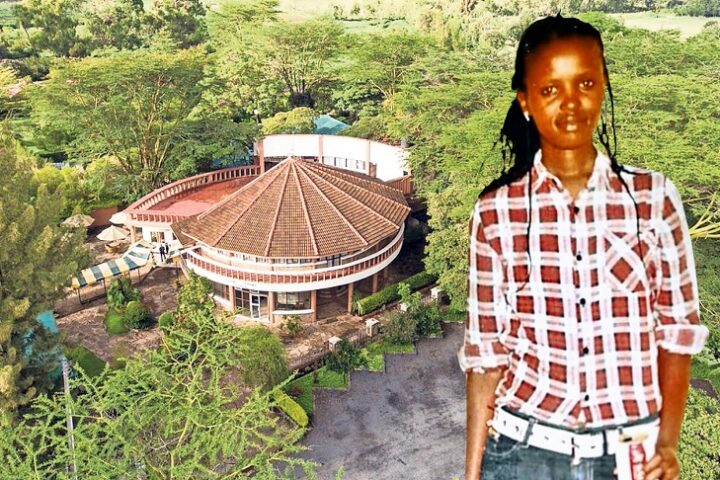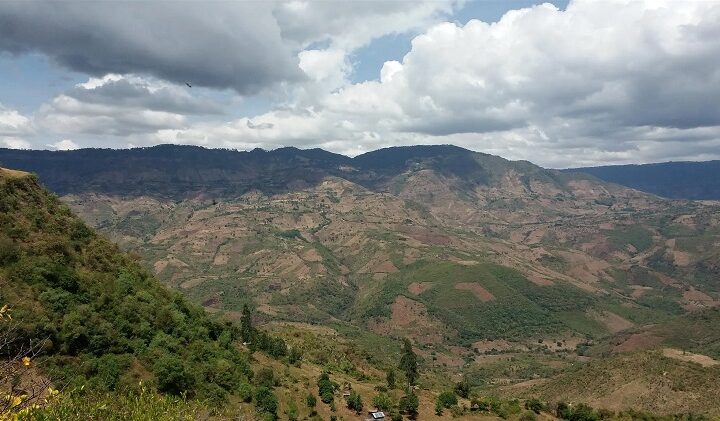As the world began battling the COVID-19 pandemic in 2020, the tea sector was facing its internal war that pitted reformers and the old guard at KTDA, the smallholder tea organization.
Beginning in 2020, KTDA would be rocked by a series of putsches and courtroom battles, some of which are still active in court, so for this article, we will not dig deep into the legal aspects; it would sub-judice and outright soporiferous.
We will give you an overview of the consequences of the fighting and the unintended consequences of Uhuru Kenyatta’s regime’s meddling in one of the most successful farmer organizations.
By 2021, it was evident that the leadership of Peter Kanyago, Lerionka Tiampati, and company secretary John Kennedy Omanga at KTDA was nearing its end. This was the culmination of the Presidential Executive Order issued in March of that year.
Executive Order No. 3 of 2021 directed the Attorney General to investigate KTDA for regulatory breaches. The die was cast, and the trio’s fate was sealed.
A new KTDA Board came into place in June 2021 which saw long-standing chairman Peter Kanyago get replaced by David Ichoho. The new board also paved the way for all senior management across all KTDA’s subsidiaries to get replaced and, at the same time, sparked a flood of court cases that still bleed the organization to date.
Related Content: New Course On Managing Tea Pests Without Pesticides Launched
So, what happened when the Tea Act 2020, championed by the reformers, was implemented?
The most controversial reform was setting a minimum price of $2.43 per kilo of tea. In as much as the old guard had been accused of many things, they were not incompetent.
They reasoned that if low prices are due to oversupply, a minimum price would incentivize more production, worsening the oversupply. How? Because it did not matter how much you produced, you were assured of a minimum price. This could encourage even more production and lead to even lower prices, and unless the government could absorb the surplus, it was a disaster waiting to happen.
Guess what? The old guard was right.
Because not all teas are equal, not all could fetch the $2.43 per kilo minimum price. The effect is that buyers would not buy these teas.
When a tea fails to sell in a particular auction, it is withdrawn to be offered for sale again after three weeks; in tea lingo, we call this a reprint. For every reprint, a 4 kg sample has to be drawn from the tea for distribution to the buyers. Removing this 4kg is a direct loss to farmers. Some teas were reprinted as many as 15 times.
In November 2023, the Daily Nation reported that an estimated 60% of the stocks sent to the Mombasa Tea Auction remained unsold and stored in warehouses due to the government-fixed minimum prices.
By August 2024, the government conceded that the minimum price policy had failed, leaving a significant surplus of unsold teas.
Remember when we said that the old guard was, at the very least, competent?
Another area where KTDA got it wrong was on KTDA Power, the organization’s power production subsidiary.
In late 2022, KTDA announced plans to sell 575 acres of land, citing the need to unlock value and transition from wood energy to sustainable alternatives like solar. The land, previously used for growing firewood for tea factories, included 71 acres in Rwika (Rukuriri Tea Factory), 106.47 acres in Mununga, Naivasha (Mataara Tea Factory), 86.8 acres in Segera, Laikipia (Chinga Tea Factory), 101 acres in Mururiri, Embu (Mununga Tea Factory), and 200 acres in Kihato, Laikipia (Ndima Tea Factory).
Former KTDA Power General Manager Japhet Sayi and one of the casualties of the coup d’état argued in a Business Daily article that the plan was at best impractical and unfeasible and at worst it was nonsense on stilts.
First, wood fuel is used to power steam boilers to produce steam, which is used to dry tea. This energy source currently accounts for 90 percent of tea factory energy requirements. Electrical energy, which is used to run tea processing machines, is sourced from Kenya Power, and factory standby diesel generators provide the remaining 10 percent of the energy mix.
Paradoxically, whereas wood fuel accounts for 90 percent of the energy supplied, this source accounts for 40 percent of the tea factories’ energy costs. Electricity, a tenth of the energy mix, accounts for 60 percent of the energy bill.
In short, electrical energy is simply far more expensive compared to the energy derived from fuelwood.
A reversed situation would make sense, and it has been done elsewhere; the development of sustainably managed wood fuel farms with well-established harvesting cycles used to generate power while the low-pressure by-product is used to dry tea.
Secondly, not all KTDA tea factories can operate on alternative energy sources.
Excluding electrical energy supplied by Kenya Power and self-generated electricity by 13 out of the 71 factories, an average tea factory would use 3MW of power to substitute wood fuel for boiler steam generation.
Even for factories that produced their hydropower, it was not enough to replace Kenya Power.
Sixty (60) tea factories would, for example, require 180MW for steam generation alone, while the total established hydropower potential is only 40MW. 15MW of hydropower was already developed and connected to the 13 factories for the sole supply of electricity to run tea machines and not to replace wood fuel.
Sayi added that solar was and still is a long shot and is aimed at providing electrical energy to replace only a portion of the demand because it is only available six to eight hours per day, and you cannot accurately plan for it because sometimes clouds and rain may interfere with supply during the day.
The best solar can do, based on available proven technologies, is to replace 30 percent of electricity sourced from Kenya Power. In effect, solar can only replace 30 percent of the 10 percent of factory energy requirements, a paltry 3 percent, to be realistic.
Finally, he argued that selling hundreds of acres of land acquired to grow trees for firewood was the “epitome of environmental and economic retrogression”. Serious and well-informed research was conducted to inform the acquisition of land for wood fuel development as the surest way to guarantee tea business sustainability alongside investment in hydropower generation. This was informed by the unsustainable rise in both heat (tea drying) and electrical (running machines) energy needs.
Related Content: The Illegitimate Board At KTDA Will Only Cost Farmers Millions
Furthermore, he said that it was confounding that while it is still using wood fuel for its energy needs, one factory had advertised to sell its mature eucalyptus trees! What would be the immediate substitute?
Before the use of wood fuel, the smallholder tea factories used to generate steam for tea drying by using fossil fuels. The switch to fuel wood was informed by the unmanageable fuel prices.
The cost of outsourcing fuelwood kept rising, coupled with environmental concerns, hence the drive to develop sustainable, well-managed, regenerating wood fuel farms owned by KTDA. This was a well-thought-out and researched endeavor to address both economic and environmental concerns. Good learning examples were not far away.
It is difficult to comprehend the technical, economic and environmental considerations to posit you can replace wood fuel by either solar or hydropower. A sober follow-up was required, with the proponents planning to dispose of these key biological assets before an irreversibly, painful decision was implemented.
Overall, KTDA-managed factories shouldn’t have sold land with trees used for generating energy as it goes against their mandate and could have negative consequences for small-scale farmers, the environment, and the local community. He advised that it was important for these factories to carefully consider the potential consequences of such a decision before proceeding.
Next, we will look at another area where there was political meddling. Transport and logistics.
Related Content: The Darkest Tales Of KTDA: From Bonus To A Messy Coup
As a continuation of Part 2, we will look at how KTDA got roped into the SGR boondoggle courtesy of an overreaching Executive.












